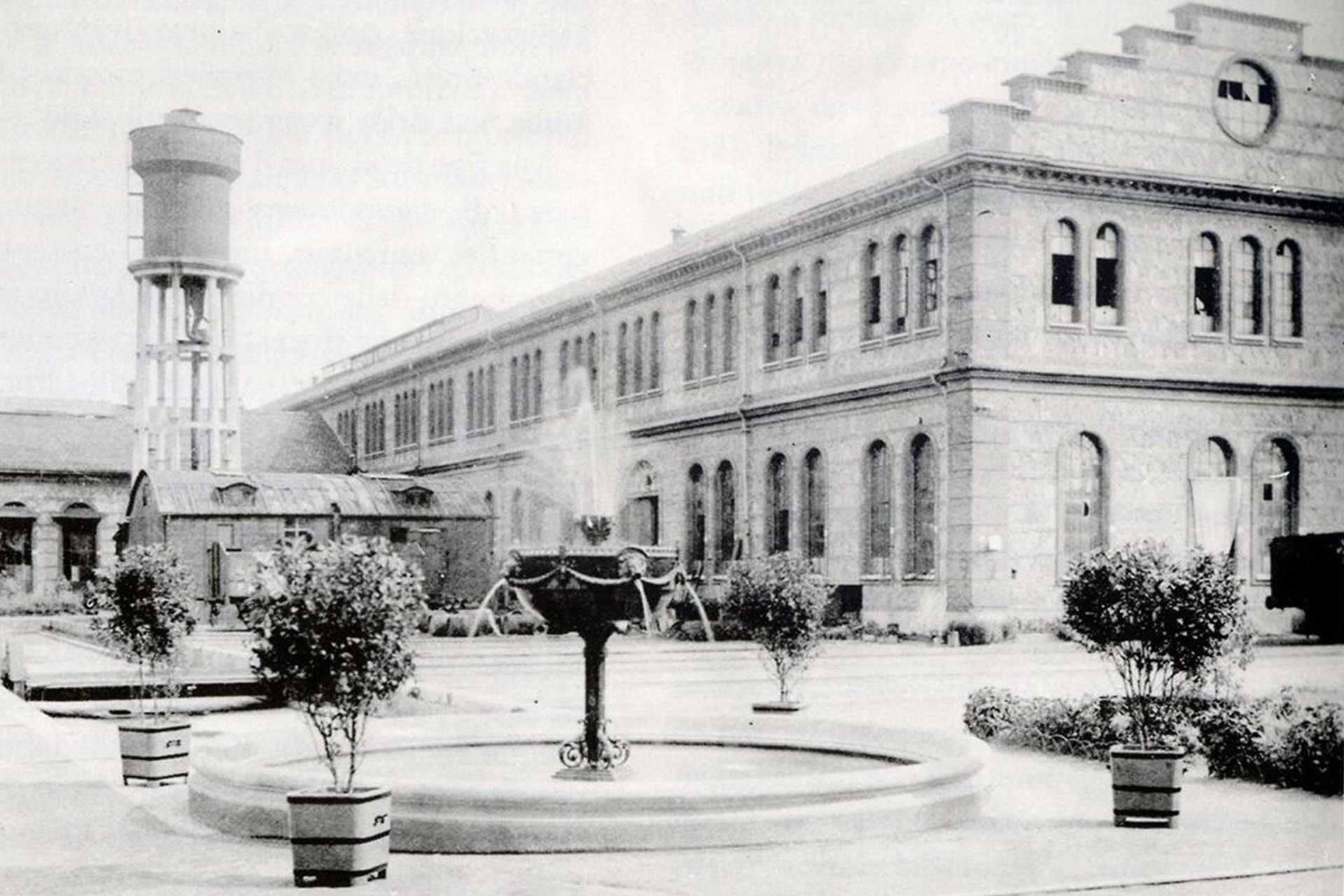High-tech solutions, environmental sustainability, preservation of the historical value, flexibility of spaces, accessibility for all: these are the principles of the renovation and recovery of OGR
The first and second life of OGR, Turin
Some places have a second life, the OGR, Turin – Officine Grandi Riparazioni have three. The Officine are an industrial complex built in the late nineteenth century as a place for the maintenance of locomotives and railway wagons. This was its first life. After its closure in the early 1990s, the site was abandoned for years and was destined for demolition. In 2013, the Fondazione Cassa di Risparmio di Torino bought the building. They decided transform it into a large exhibition space and prevent it from destruction. This was its second life.
The nineteenth-century industrial architecture in bricks with trusses and iron pillars was fully renovated. And OGR Turin opened in 2017. The structure has an H-shaped plan, which extends for about twenty thousand square meters. And it has a height of over sixteen meters. «For exhibitors at OGR, Turin it is a challenge to adapt their work in such a wide and far-off dimension of the classic museum», explains Paola Mungo, OGR Communication Manager. «For us, this is the opportunity to work on site-specific projects, which arise every time in response to the place, its history, its conformation, its possibilities and its limits». The aim of the CRT Foundation was to create a centre of innovation and experimentation in the arts and technology fields.
OGR Tech: artificial intelligence and blockchain at OGR, Turin
Therefore, following this mission, in June 2019, they opened OGR Tech. A hub dedicated to technology focused on artificial intelligence and block chain. A two hundred meters boulevard defines the central nave of the OGR Tech, illuminated by the windows of the roof. On the sides, there are two aisles with some meeting rooms and open space offices on two floors with five hundred workstations.
Moreover, at the Officine, not only start-ups, but also national and international companies, investors and the Politecnico di Torino collaborate. The space dedicated to technology completes the project of the new OGR. It includes the Taste area, dedicated to food and catering, and the Cult area, where art exhibitions, concerts and live shows take place.
Multidisciplinary and the hybridization of languages: OGR Cult
The fusion of visual and performing arts is one of the main characteristics of the evolution of museums and cultural sites, in recent years. OGR Cult follows this inclination by looking at those institutions that have worked on multidisciplinary and the hybridization of languages. Paola Mungo gives some examples. «I can mention the Barbican Center in London, a complex that hosts concerts of classical and contemporary music, theatrical performances, exhibitions and cinemas. Or the Tramway in Glasgow, a centre of visual and performing arts based in a former tram depot».
In 2019, they hosted four exhibitions at the Officine, all designed for the OGR spaces. In Concert, a solo exhibition by the artist and composer Ari Benjamin Meyers. Carousel an installation and performance conceived by the Argentine-born English artist Pablo Bronstein. ‘History as Landscape’ by the Brazilian photographer Mauro Restiffe and the exhibition by Monica Bonvicini ‘As walls keep shifting’. Additionally, under the steel trusses of OGR were also hosted concerts. Among these were the American alternative-rock band Pixies and the British singer-songwriter Tom Walker.
The third life of OGR, Turin
The current situation of OGR is different from what other Italian cultural institutions are living. In fact, due to the Covid-19 emergency, they decided to turn it into a hospital that could accommodate up to one hundred patients in sub intensive care. This was the third life of the Officine. «It was a response to the desire of realizing open spaces available to the community. However, as you can imagine, this slowed down the times of reopening» says Mungo.
OGR, Turin
Corso Castelfidardo, 22, Turin
High-tech solutions, environmental sustainability, preservation of the historical value, flexibility of spaces, accessibility for all, are the inspiring principles of the renovation and recovery of the OGR. From former train repair workshops to new workshops of contemporary culture, innovation and business acceleration.




















